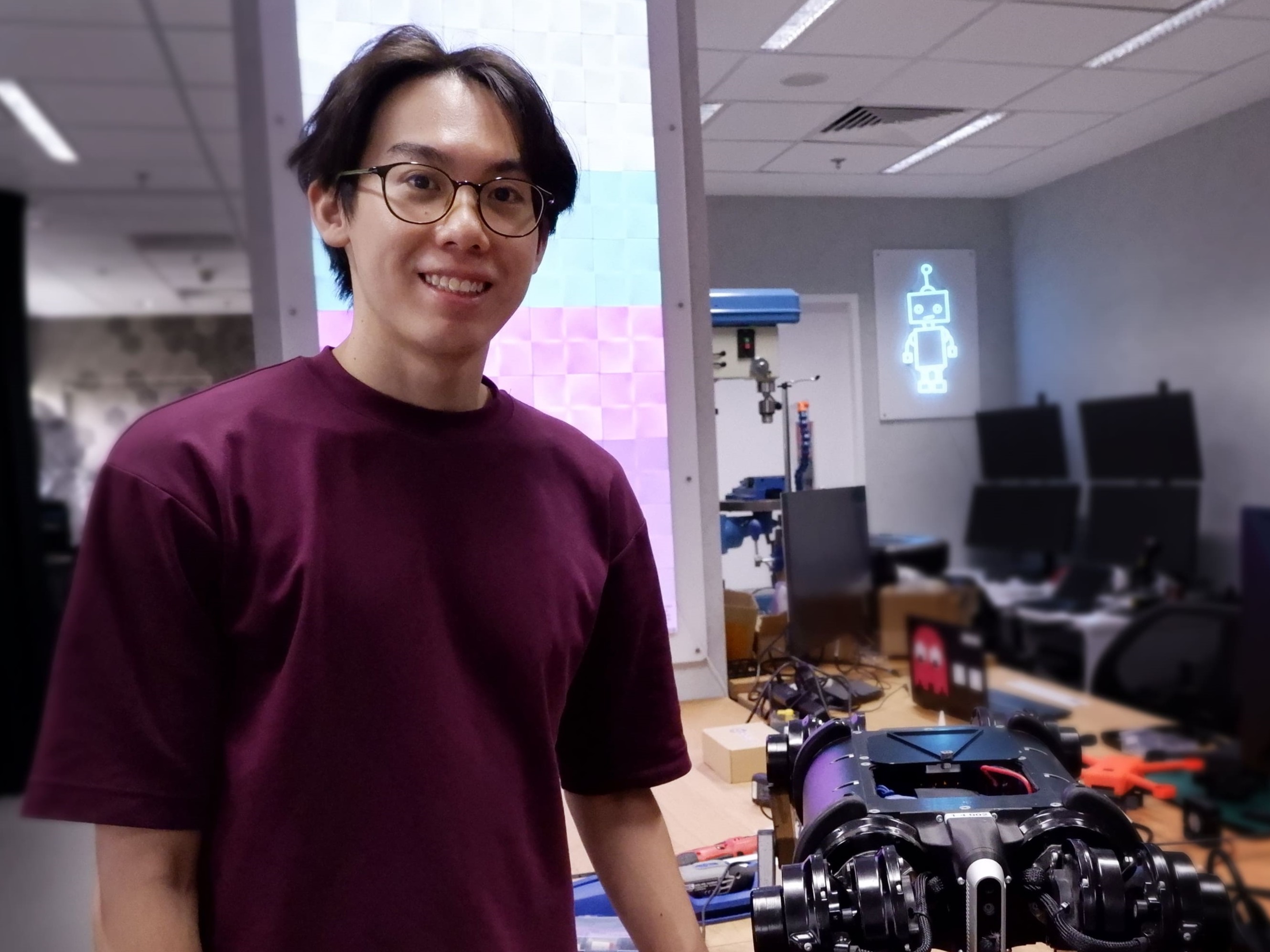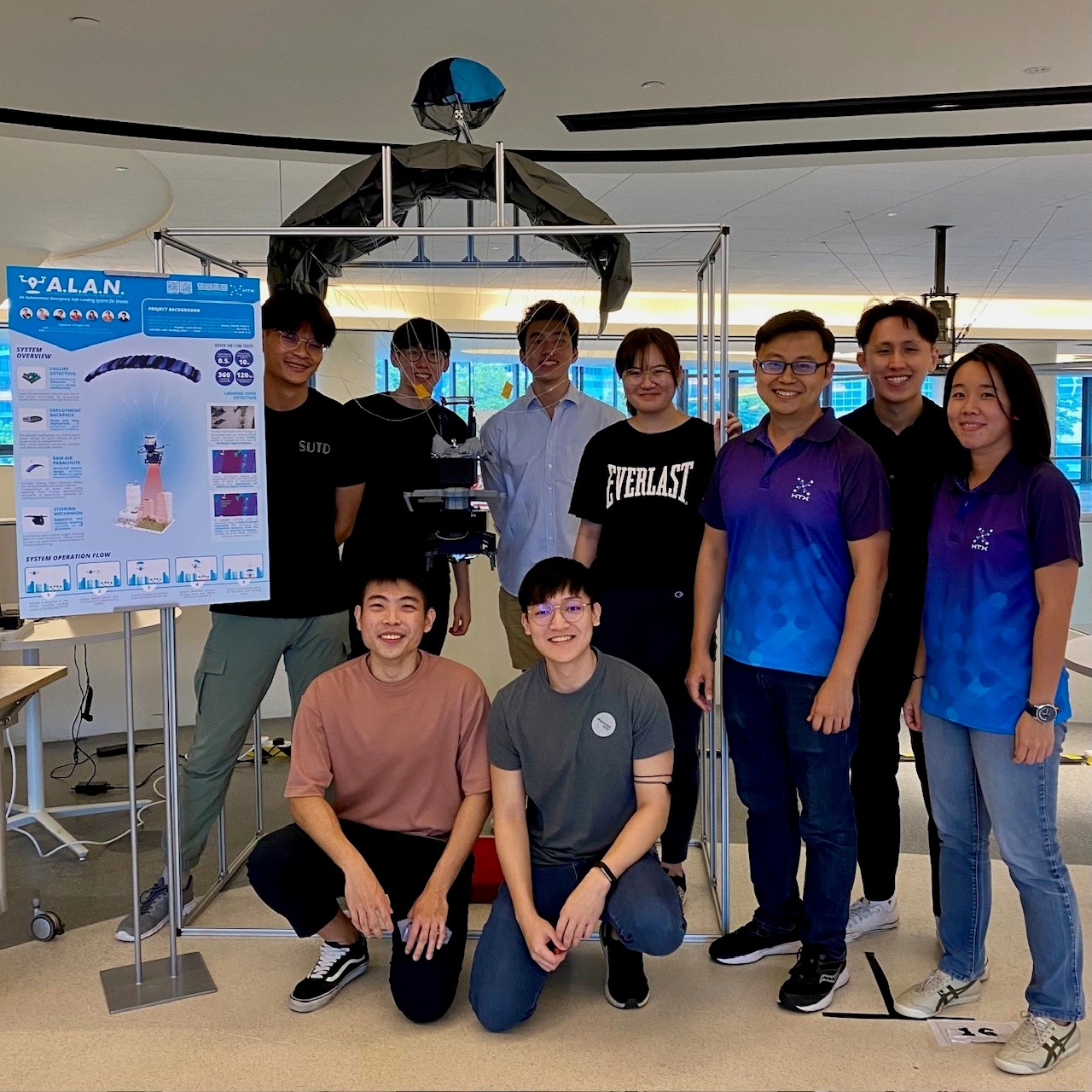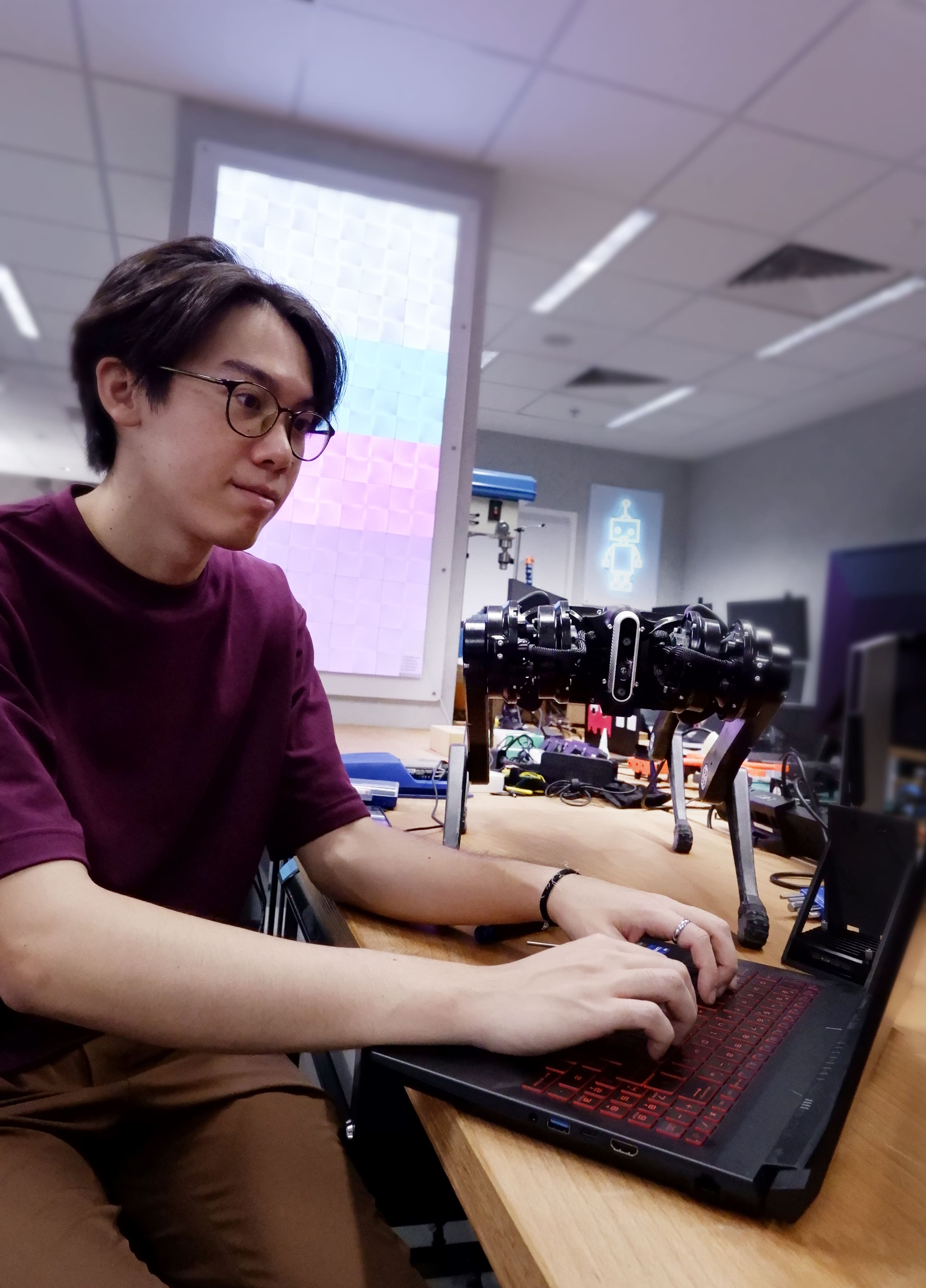 Associate Timothy Lim. (Photo: HTX)
Associate Timothy Lim. (Photo: HTX)
Final year projects often evoke a sense of dread—for many of us, it required months of “chionging” (rushing) to meet important project deadlines. However, Timothy thoroughly enjoyed his final year capstone project as a mechanical engineering undergraduate at the Singapore University of Technology and Design (SUTD) due to his partnership with the Robotics, Automation, and Unmanned Systems Centre of Expertise (RAUS CoE)
I applied for the Associates’ Programme as I knew I’d be given the creative freedom to experiment with my Greenfield project and further develop my technical skills.
But how did Timothy and RAUS even partner up to begin with?
Well, SUTD required Timothy to acquire an industry partner and approach them for potential capstone projects. Upon reaching out to HTX, he was assigned the project of a lifetime—creating an automatic landing module for drones that would prevent any civilian casualties, even if the drone malfunctions while landing.
 Timothy and his teammates, along with Lee Guoming (then Deputy Director of Aerial Systems) and Stacia Chua (Engineer, Aerial Systems) pose in front of the capstone project aptly named A.L.A.N (Autonomous Landing and Navigation). (Photo: HTX)
Timothy and his teammates, along with Lee Guoming (then Deputy Director of Aerial Systems) and Stacia Chua (Engineer, Aerial Systems) pose in front of the capstone project aptly named A.L.A.N (Autonomous Landing and Navigation). (Photo: HTX)
Speaking about his collaboration with RAUS, Timothy fondly recalled, “I really appreciated how the RAUS team was open-minded and let me experiment with the design. Even though I was just a student, they allowed me to have free reign over the project if I showed progress."
After experiencing the team’s open-minded and supportive nature first-hand, Timothy set his sights on joining RAUS under HTX’s Associates’ Programme immediately upon graduating.
Think of the Associates’ Programme as a sort of “incubator” for budding STEM talents. Specially curated for STEM graduates with less than three years of work experience, HTX’s Associates’ Programme lets Associates gain hands-on experience in various security domains all whilst exploring the latest cutting-edge technology. The programme culminates in a “Greenfield Project”, where Associates create their own challenging and innovative projects under the guidance of industry specialists.
“I applied for the Associates’ Programme as I knew I’d be given the creative freedom to experiment with my Greenfield project and further develop my technical skills,” Timothy added.
Learning on the job
Instead of diving head-first into their Greenfield projects, Associates are given ample time to learn all they can about their field of interest.
For Timothy, most of his learning came from hands-on experiences from working with RAUS’ 3i team (the technology development arm of RAUS). Here, he works on tele-operated mobile manipulators, which are robots that can be controlled remotely by Home Team officers. More specifically, he is working on improving the link (connectivity) between the officer’s controls and the robot itself.
 Timothy works with all sorts of tele-operated robots, including robotic dogs like Spirit-40! (Photo: HTX)
Timothy works with all sorts of tele-operated robots, including robotic dogs like Spirit-40! (Photo: HTX)
“I’m working on helping Home Team officers control tele-operated robots beyond their visual line of sight, meaning they do not have to be near the robot while operating it. However, controlling the robot at such a distance requires good connectivity,” Timothy explained.
While enhancing connectivity may sound like something you do with your Wi-Fi at home, it serves a far greater purpose in the Home Team—ensuring that tele-operated robots can function in dangerous areas without putting officers in harm’s way.
However, improving connectivity in this context is a whole other ball game and comes with its own set of unique challenges.
Conquering connectivity
“Technical challenges are part of the research development process and are unavoidable. But I feel like there is always more than one way to circumvent them as long as I keep an open mind,” Timothy stated.
For example, when testing his teleoperation platform, Timothy initially routed the connection between the robot and his controls through an online database using Wi-Fi. However, he found that in areas where the Wi-Fi connectivity was unstable, the robot would become unresponsive.
“Disruptions like these during Home Team operations put lives on the line, and that’s simply unacceptable. To overcome this issue, I got creative and switched to radio as my mode of connectivity instead,” Timothy proudly shared.
Switching the mode of connectivity, however, meant that Timothy had to use different communication protocols. Think of communication protocols as sets of ‘rules’ the sender and receiver follow to communicate, with different communication protocols requiring different skillsets to implement.
“I was fortunate to have a communication specialist as my team lead as he helped me move forward when I got stuck with the new communication protocols. My colleagues in the lab were always keen to advise me as well, as some of them had prior experience with the tech,” Timothy recounted.
The road ahead
With his eye on the horizon, Timothy is eager to start working on his Greenfield project in March.For my Greenfield project, I’m working on creating a tele-operated robot that can complete specialised tasks. I’m really excited as I’ll be able to build upon the work I’ve done in 3i,” he shared enthusiastically.
Ready to push the frontiers of science and tech? Apply for HTX’s Associates’ Programme here. Applications are now open and will close on 30 April 2024.
We are always seeking inquisitive and innovative individuals to co-create extraordinary solutions with us.
Join us to be at the forefront of the finest tech capabilities in the field! Join Us

